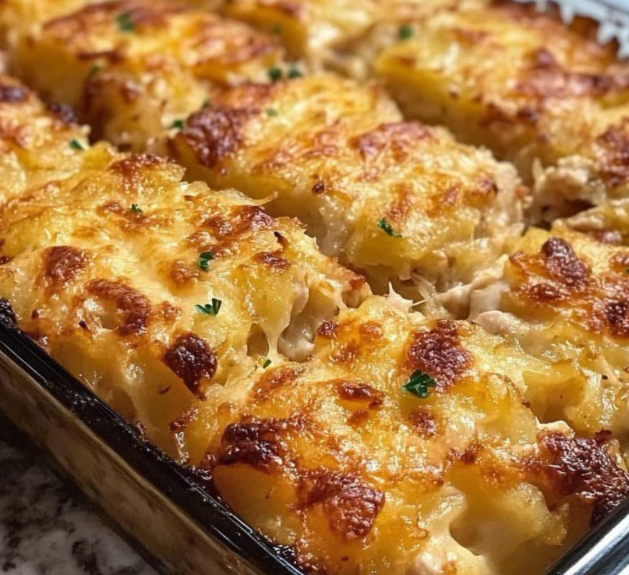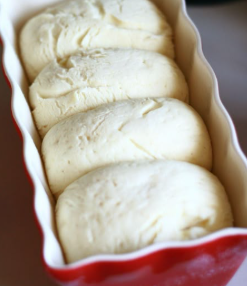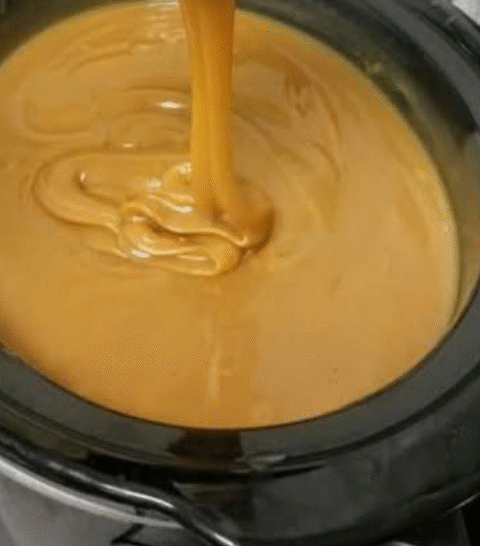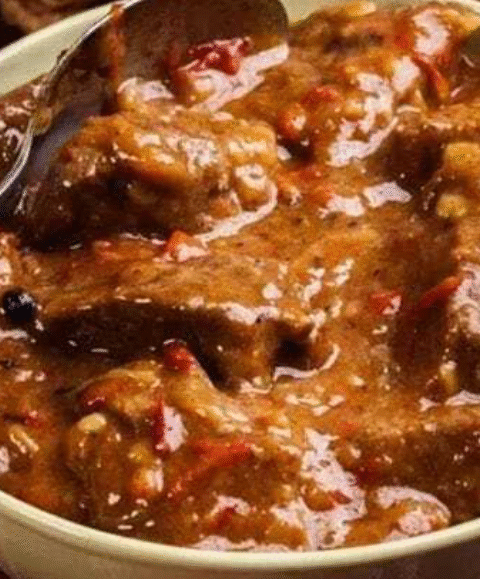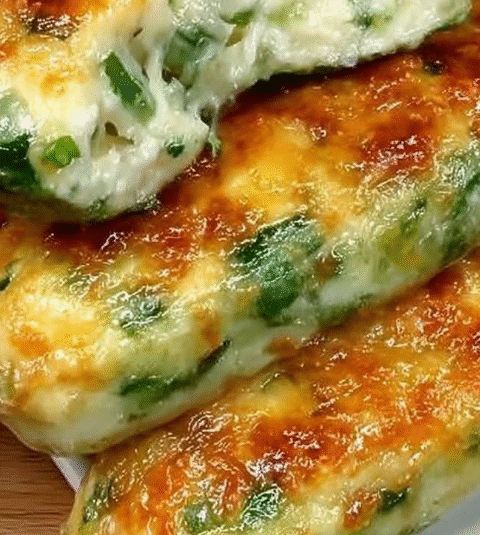Hashbrown Casserole: The Creamy, Cheesy, Golden‑Baked Comfort Dish Everyone Loves
There’s a reason this casserole shows up at Sunday brunches, holiday tables, and potlucks across America. It’s warm. It’s rich. It’s loaded with crispy‑edged hash browns, melty cheddar, and a velvety cheese sauce that bakes into golden, bubbly perfection.
Say hello to Hashbrown Casserole — a Midwest favorite, a church‑potluck legend, and the ultimate comfort side dish that somehow feels like breakfast, dinner, and home all in one bite.
No fancy ingredients. No complicated steps. Just simple, satisfying, crowd‑pleasing goodness — ready in under an hour.
Introduction: Why Hashbrown Casserole is a Comfort Classic
Hashbrown casserole is more than just potatoes and cheese. It’s a warm hug of a dish: buttery, creamy, crunchy. It appeals because it’s easy, forgiving, and beloved by many. Whether you’re bringing something to share, feeding a family, or just want a hearty side that pairs with just about anything—it delivers.
In this article, you’ll get:
- A step‑by‑step recipe
- Nutrition & health considerations
- Expert tips for best texture and flavor
- Variation ideas
- FAQs & food safety notes
Ingredients: What You’ll Need
- Frozen hash browns (thawed) or shredded/cubed potatoes
- Sharp Cheddar cheese (shredded)
- Condensed soup (cream of chicken, or mushroom if you prefer vegetarian)
- Sour cream (or Greek yogurt if doing a lighter version)
- Butter (melted), plus more for topping if desired
- Onion, chopped
- Salt, pepper
- Crunchy topping (cornflakes crushed, or crackers, or bread crumbs)
Cooking Instructions: Step by Step
Prep & Bake
- Preheat your oven to ~350°F (≈ 175°C).
- In a large bowl, combine thawed hash browns, most of the shredded cheese, condensed soup, sour cream, half the melted butter, chopped onion, salt & pepper. Mix until well‑coated.
- Transfer the mixture to a greased baking dish (for example a 9×13‑inch pan or similar capacity).
- In a small bowl, crush your crunchy topping (cornflakes or crackers), toss with the remaining melted butter. Spread this atop the casserole.
- Bake covered or uncovered depending on recipe (~40 minutes to 1 hour) until the edges are golden, top is crispy, and the mixture is bubbly.
- Let rest a few minutes before serving so it sets a bit (easier to serve).
Nutrition & Health Highlights
What’s in a Serving
| Component | Approximate Amount per Serving* | Health / Nutrition Role |
|---|---|---|
| Calories | ≈ 320‑340 kcal (for standard full‑fat version) :contentReference[oaicite:0]{index=0} | Good energy source, especially for high‑activity days or when feeding many |
| Total Fat | ≈ 28‑32 g (includes saturated fat) in full‑fat versions :contentReference[oaicite:1]{index=1} | Rich, satisfying flavor; saturated fat should be eaten in moderation |
| Protein | ≈ 8‑12 g (varies with cheese and size of serving) :contentReference[oaicite:2]{index=2} | Helps with satiety and muscle repair |
| Carbohydrates | ≈ 17‑45 g depending on recipe version and serving size :contentReference[oaicite:3]{index=3} | Main energy‑source; potatoes supply starch (complex carbs) |
| Sodium | ≈ 500‑1,100 mg depending on soup, cheese, and added salt :contentReference[oaicite:4]{index=4} | Important to watch if you are limiting sodium intake |
| Calcium | ≈ 170‑180 mg :contentReference[oaicite:5]{index=5} | From cheese & dairy; good for bones, etc. |
*Based on standard full‑fat / traditional recipes, serving size ~1/12 of a 9×13 casserole. Values vary with substitutions. :contentReference[oaicite:6]{index=6}
Health Considerations & Tips
- Portion control: Because of the richness (cheese, butter, creamy soup), this is a dish best served in modest amounts when used as a side.
- Limit saturated fat: Use reduced‑fat cheese, reduce butter, or swap some dairy for lower‑fat alternatives like Greek yogurt.
- Watch sodium: Condensed soups and processed cheeses can be high in salt. Picking lower‑sodium soup, or homemade cream sauce, helps.
- Add vegetables: Bell peppers, onions, spinach or mushrooms can increase fiber and micronutrients with minimal extra work.
- Make‑ahead & reheating: Casserole often tastes even better the next day. Store properly, reheat in oven for best texture on top. Avoid sogginess.
Variations & Custom Ideas
- Vegetarian version: Use cream of mushroom soup instead of cream of chicken. Add more vegetables.
- Lighter version: Use low‑fat cheese, Greek yogurt instead of sour cream, less butter. :contentReference[oaicite:7]{index=7}
- Keto or low‑carb style: Use riced cauliflower in part or whole instead of potatoes; use full‑fat cheese but reduce starchy ingredients.
- Gluten‑free topping: Swap cornflakes or crackers for gluten‑free crumbs or crushed nuts.
- Spice it up: Add smoked paprika, garlic powder, or a dash of cayenne for mild heat.
Storage & Food Safety
- Cool leftovers to room temperature, then cover and refrigerate within two hours.
- Use within 3‑4 days in the fridge. Freeze if you want longer storage (some recipes freeze well). Thaw overnight in fridge.
- Reheat thoroughly (to at least 74°C / 165°F) to ensure food safety.
FAQs
1. Can I assemble the casserole the night before?
Yes — you can mix everything except the crunchy topping, cover tightly, and leave in the refrigerator overnight. Add the topping just before baking. You may need extra bake time if very cold.
2. What kind of potatoes are best?
Frozen hash browns (shredded or cubed) are classic because they keep the dish simple. You can also use fresh potatoes: shred them and let excess moisture drain, or use pre‑cooked potatoes. Just adjust bake time accordingly.
3. Can I make this gluten‑free?
Yes. Use gluten‑free soup (or make your own), skip cornflake or use gluten‑free crumbs, and verify all processed ingredients are labelled gluten‑free.
4. How do I get a crispy top?
Key is the topping (cornflakes, crackers) and some butter on top. Bake uncovered for part of the bake time so the top air dries a little. Also, use a broiler for a couple minutes at end (watch closely).
5. Can I use fresh potatoes instead of frozen?
You can — shred or cube them, then blanch or par‑cook so they finish baking at the same time as the rest of the dish. Also, squeeze excess moisture so they don’t make it watery.
6. What should I serve it with?
This casserole is rich and creamy, so it pairs well with lean protein (grilled chicken, pork chops), fresh greens, or something acidic (a tomato salad, vinegar‑dressed slaw) to balance the richness.
7. Is it okay for vegetarians?
If you use vegetable‑based soup (cream of mushroom), omit chicken‑based ingredients, then yes. Also confirm cheese/soup doesn’t use animal rennet if that matters for you.
8. Can I freeze it before or after baking?
Yes. You can freeze unbaked (wrapped well) or baked leftovers. Reheat from thawed state by warming in oven until heated through and top is crisped.
9. What’s the difference between this and “funeral potatoes” or “funeral casserole”?
They are basically the same family of dishes. The name “funeral potatoes” is often used in the American South/Midwest; they typically have the same base (potatoes, cheese, creamy binder, crunchy topping). Regional tweaks and names vary, but concept is very similar.
10. How do I reduce calories without compromising flavor?
Some tricks: use less butter, use Greek yogurt instead of full sour cream, choose reduced‑fat cheese, add veggies to bulk it up, reduce amount of creamy soup or choose one lower in salt/fat. Small steps can make a big difference.
Internal Links & Related Reading
For more comfort side dish ideas, check out our Cozy Potato Side Dishes and Cheesy Casserole Recipes. If you love baked dishes, see also Bake & Roast Diaries.
Conclusion
Hashbrown casserole isn’t fancy. That’s exactly its power. It brings comfort, ease, and that beloved golden‑cheesy texture we all crave. Whether you serve it for brunch, holidays, or simply a weeknight side, it’s one of those dishes that feels like home.
Make it your own: with tweaks, lighter swaps, or extra veggies. But don’t skip the cheese or crunchy top—it’s what makes this dish shine.
